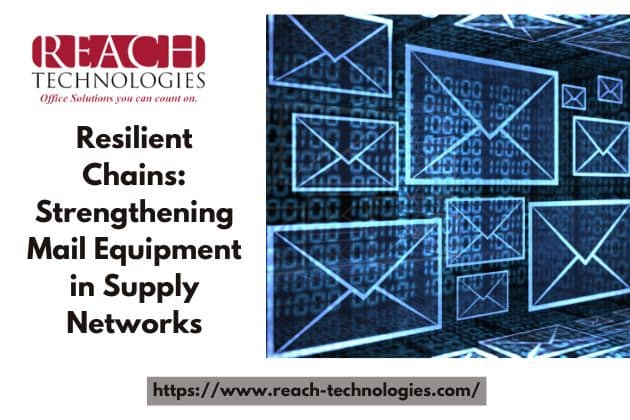The modern world relies on an intricate web of supply chains, a network of interconnected businesses that deliver goods and services to consumers. Within this network, the postal service plays a crucial role, ensuring the secure and timely delivery of mail and packages. However, unexpected disruptions – from extreme weather events to cyberattacks – can threaten this vital service.
This is where resilient mail equipment comes into play. By investing in robust, adaptable mail processing machinery, postal organizations can ensure their operations remain functional even in the face of challenges. This blog post will delve into the importance of resilient mail equipment in today’s supply chains, exploring the key features and benefits, potential threats to consider, and strategies for implementation.
The Evolving Landscape of Mail Delivery
The landscape of mail delivery is constantly evolving. The rise of e-commerce has led to a surge in package volumes, placing additional strain on existing infrastructure. Additionally, climate change is increasing the frequency and severity of extreme weather events, posing a significant threat to physical mail infrastructure.
In this ever-changing environment, traditional mail equipment built for stability often lacks the necessary flexibility to adapt. Rigid systems can struggle to handle the fluctuating volume and size variations of modern mail streams. Additionally, outdated equipment might be susceptible to breakdowns or malfunctions due to harsh weather conditions.
The Importance of Resilient Mail Equipment
Resilient mail equipment is designed to withstand these challenges. Key features include:
- Durability and Reliability: Made from high-quality materials and rigorously tested, resilient equipment can operate seamlessly under demanding conditions.
- Scalability and Flexibility: These systems are adaptable to handle fluctuating mail volumes and diverse package sizes.
- Connectivity and Automation: Advanced features like automation and real-time data collection improve efficiency and allow for proactive troubleshooting.
- Energy Efficiency: Sustainable designs minimize energy consumption, contributing to environmental goals.
By incorporating these features, resilient mail equipment offers several key benefits:
- Reduced Downtime: Less susceptible to breakdowns and malfunctions, resilient equipment minimizes downtime during critical operations.
- Improved Efficiency: Automation and advanced sorting capabilities enhance throughput, allowing for faster processing times.
- Enhanced Security: Integrated security features protect sensitive mail and package contents.
- Cost Savings: Reduced downtime, increased efficiency, and lower energy consumption contribute to overall cost savings.
Threats to Consider: Building Robust Systems
To truly strengthen mail delivery networks, postal organizations must consider potential threats and implement strategies to mitigate them. Here are some key areas to address:
- Climate Change: Equipment should be designed to withstand extreme temperatures, flooding, and power outages. This might involve incorporating weatherproof enclosures, backup power systems, and heat-resistant materials.
- Cybersecurity: With increasing reliance on automation and data collection, robust cyber security measures are critical. This includes regular software updates, secure data encryption, and employee training on cyber hygiene.
- Physical Security: Physical security measures should be in place to prevent theft or damage to mail and equipment. High-security locks, access control systems, and camera surveillance can deter unauthorized activity.
Strategies for Implementation: Building a Resilient Future
Investing in resilient mail equipment is a strategic move for postal organizations looking to ensure efficient and reliable mail delivery. Here are some strategies to facilitate smooth implementation:
- Cost-Benefit Analysis: Carefully evaluate the upfront costs of implementing resilient equipment against the long-term benefits. Consider factors like reduced downtime, increased efficiency, and potential cost savings.
- Collaboration with Equipment Manufacturers: Partner with leading mail equipment manufacturers who prioritize innovation and robust design. Seek equipment that addresses the specific needs and challenges of your postal network.
- Phased Implementation: A phased approach allows for system testing and staff training before full implementation. It can also help spread the financial investment over time.
- Training and Upskilling: Employees need training to operate and maintain new equipment effectively. Provide relevant training programs to ensure smooth integration of new technologies.
Conclusion:
In today’s world of interconnected supply chains, the postal service plays a vital role. By investing in resilient mail equipment, postal organizations can build stronger, more adaptable networks capable of withstanding a range of challenges. Resilient equipment fosters efficiency, security, and sustainability, ensuring the continued success of this critical service.
As technology continues to evolve, ongoing research and development in resilient mailer processing equipment is crucial. By embracing innovation and future-proofing their systems, postal organizations can ensure reliable mail delivery for years to come.

